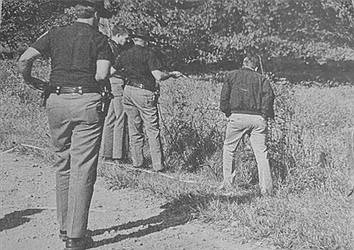The American Bald Eagle makes a comeback
November 22, 2022 at 7:05 p.m.

The American Bald Eagle has long been a symbol of the American spirit, heralded for its freedom, strength, and vision. After hovering near the brink of extinction, the bald eagle has made a bold comeback, justifying its iconic status with its resilience, becoming now a symbol of hope and restoration.
Considered sacred by some ancient American cultures, the eagle was often believed to have lived here long before humans arrived. In the 1780s, this indigenous North American bird was chosen to be the national symbol of the newly formed United States, though it wasn't unanimous (Benjamin Franklin was in favor of the wild turkey.) Despite the eagle's revered status, the U.S. population had plummeted to little more than 400 nesting pairs by 1963. It was around then that President Kennedy wrote to the Audubon Society, saying: “The Founding Fathers made an appropriate choice when they selected the bald eagle as the emblem of the nation. The fierce beauty and proud independence of this great bird aptly symbolizes the strength and freedom of America. But as latter-day citizens we shall fail our trust if we permit the eagle to disappear.”
In Indiana, habitat loss and the use of pesticides such as DDT (which thins and weakens the shell of many birds' eggs) had contributed to the bald eagle's disappearance, and the last successful nest in the state had occurred in 1897. The Bald Eagle Project eventually came along and was the first endangered species restoration project initiated by the Indiana Nongame & Endangered Wildlife Program. Because of this, 73 bald eagle chicks were released between 1985 and 1989 at Monroe Lake, where Indiana's first successful nests finally occurred again in 1991. Their nesting was monitored and the young eagles were tracked with leg tags. With protection, the number of nesting territories continued to increase, and the bald eagle was removed from the state-endangered list in 2008. The numbers and nests have quadrupled since 2009, according to the U.S. Fish and Wildlife Service. In 2020, there were over 350 eagle nesting territories in Indiana, and bald eagles were removed from the list of species of special concern. They are still protected by other state and federal laws, however, including the Bald and Golden Eagle Protection Act.
Union County resident Bruce Brooks has photographed local wildlife for years, especially the bald eagle population. Brooks said he has “seen a remarkable increase” in the number of local bald eagle nests since he began following them in 2013. “It was a big deal to see an eagle back then,” he recalled. “Photographers would alert each other and within hours a crowd of long-lenses would appear. Since that time, the number of local breeding pairs has increased greatly. I am aware of six nests within an hour of College Corner, and I am sure there are more.” Brooks said he now sees many juvenile and sub-adults, as well as more food sources. The eagles he has watched and photographed in Brookville (pictured) have set roots here, and with protection efforts still in place, they seem happy to stay. As Brooks concluded, “The future for Bald Eagles in the area is exciting!”
Latest News
E-Editions
Events
The American Bald Eagle has long been a symbol of the American spirit, heralded for its freedom, strength, and vision. After hovering near the brink of extinction, the bald eagle has made a bold comeback, justifying its iconic status with its resilience, becoming now a symbol of hope and restoration.
Considered sacred by some ancient American cultures, the eagle was often believed to have lived here long before humans arrived. In the 1780s, this indigenous North American bird was chosen to be the national symbol of the newly formed United States, though it wasn't unanimous (Benjamin Franklin was in favor of the wild turkey.) Despite the eagle's revered status, the U.S. population had plummeted to little more than 400 nesting pairs by 1963. It was around then that President Kennedy wrote to the Audubon Society, saying: “The Founding Fathers made an appropriate choice when they selected the bald eagle as the emblem of the nation. The fierce beauty and proud independence of this great bird aptly symbolizes the strength and freedom of America. But as latter-day citizens we shall fail our trust if we permit the eagle to disappear.”
In Indiana, habitat loss and the use of pesticides such as DDT (which thins and weakens the shell of many birds' eggs) had contributed to the bald eagle's disappearance, and the last successful nest in the state had occurred in 1897. The Bald Eagle Project eventually came along and was the first endangered species restoration project initiated by the Indiana Nongame & Endangered Wildlife Program. Because of this, 73 bald eagle chicks were released between 1985 and 1989 at Monroe Lake, where Indiana's first successful nests finally occurred again in 1991. Their nesting was monitored and the young eagles were tracked with leg tags. With protection, the number of nesting territories continued to increase, and the bald eagle was removed from the state-endangered list in 2008. The numbers and nests have quadrupled since 2009, according to the U.S. Fish and Wildlife Service. In 2020, there were over 350 eagle nesting territories in Indiana, and bald eagles were removed from the list of species of special concern. They are still protected by other state and federal laws, however, including the Bald and Golden Eagle Protection Act.
Union County resident Bruce Brooks has photographed local wildlife for years, especially the bald eagle population. Brooks said he has “seen a remarkable increase” in the number of local bald eagle nests since he began following them in 2013. “It was a big deal to see an eagle back then,” he recalled. “Photographers would alert each other and within hours a crowd of long-lenses would appear. Since that time, the number of local breeding pairs has increased greatly. I am aware of six nests within an hour of College Corner, and I am sure there are more.” Brooks said he now sees many juvenile and sub-adults, as well as more food sources. The eagles he has watched and photographed in Brookville (pictured) have set roots here, and with protection efforts still in place, they seem happy to stay. As Brooks concluded, “The future for Bald Eagles in the area is exciting!”





